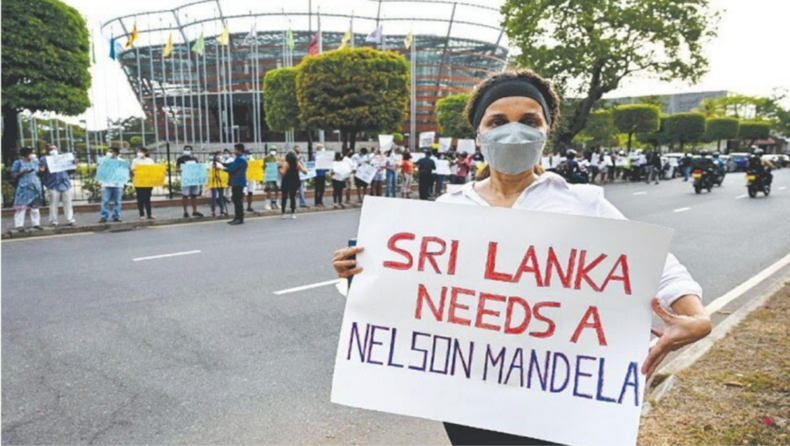Sri Lanka -the island nation has declared a state of emergency and it is going through a major economic crisis. The ruling party is facing public anger. The cabinet ministers have resigned from their posts. Thousands of countrymen have demanded the resignation of Sri Lankan President Gotabaya Rajapaksa. People are protesting on the streets, a curfew has been declared and social media has been banned.
There are a lot of factors that are responsible for the economic crisis. Firstly there was a nationwide ban on fertilizer imports to switch overnight to organic farming. Fertilizer imports were valued at $258.94 million. Sri Lanka earlier was self-sufficient in rice but after the ban, production went down 14 percent in 2021-22. The average yield per hectare fell by 14.4 percent. Tea which was Sri Lanka’s largest agricultural export faced similar repercussions.
Sri Lanka has two rice crops in a year –‘Yala’ and ‘Maha’.The Yala is planted in May-June while ‘Maha’ is planted in November-December. 60 percent of Sri Lanka’s annual rice production comes from the ‘Maha’ crop. The ban on imports of fertilizers took effect when ‘Yala’ was being planted and the lack of chemical inputs hit Maha’s yield which declined by 40-45 percent decline. The tea sector which was also destroyed badly showed lower production and hence lower exports. After the ban, the Rajapaksa government had to spend $450 million to import rice.
The tourism industry was a major source of revenue. It was about 12-13 percent of Sri Lanka’s economy. But this sector crashed because of the Easter Sunday bombings and the COVID 19 pandemic. The earnings from tourism have fallen from $4055.16 million to $1588.37 million by November 2021 as against March 2021.
Sri Lanka was already in debt. It had taken huge loans from China. In fact it has succumbed to China’s debt trap policy. China has then turned a blind eye . Prices of essential commodities like rice, tea have increased a lot.
The country is facing food and fuel shortages. The government has asked for help from Lanka
Indian Oil Corporation is owned by the Ministry of Petroleum and Natural Gas of the government of India. The Lanka IOC has given 6000 mt of Diesel to Sri Lanka. This year a $500 credit line was signed for fuel purchases.
Food prices have surged to unbearable levels. The Sri Lankan currency-the Sri Lankan rupee is at overall inflation of 17.5 percent for February 2022.
In February Sri Lanka’s foreign currency reserve fell below 70 percent compared to January 2020. It is on the brink of bankruptcy. The Central Bank of Sri Lanka’s website shows that the total official forex reserves are at $2311.25 million. But this can sustain Sri Lanka for only 1.3 months.
On Monday in his first public appearance since a countrywide protest, Prime Minister Mahindra Rajapaksa addressed the nation and said “We have to strengthen the economy. We will take responsibility to resolve the economic situation the same way we ended the 30 -year war”. Also Finance minister Ali Sabry said that the country needs $3 billion in external assistance in the next six months.
The Sri Lankan government has asked for emergency loans from countries like India, and China and organizations like the IMF to buy food and fuel. It has requested India for a credit line of $ 1 billion and a $2.5 billion credit line from China. Sri Lanka is also facing China’s debt. It has requested to restructure its debt.













